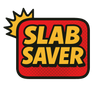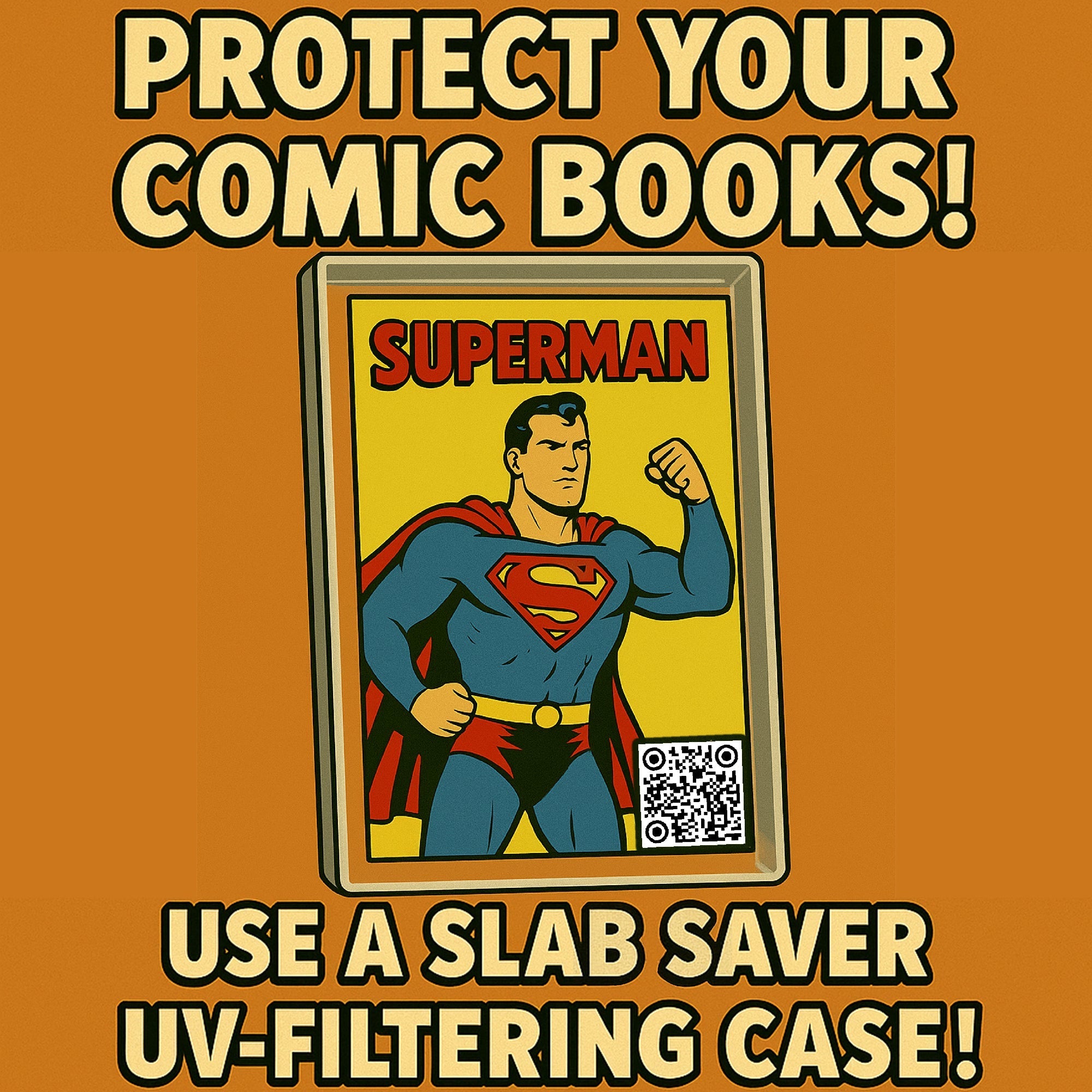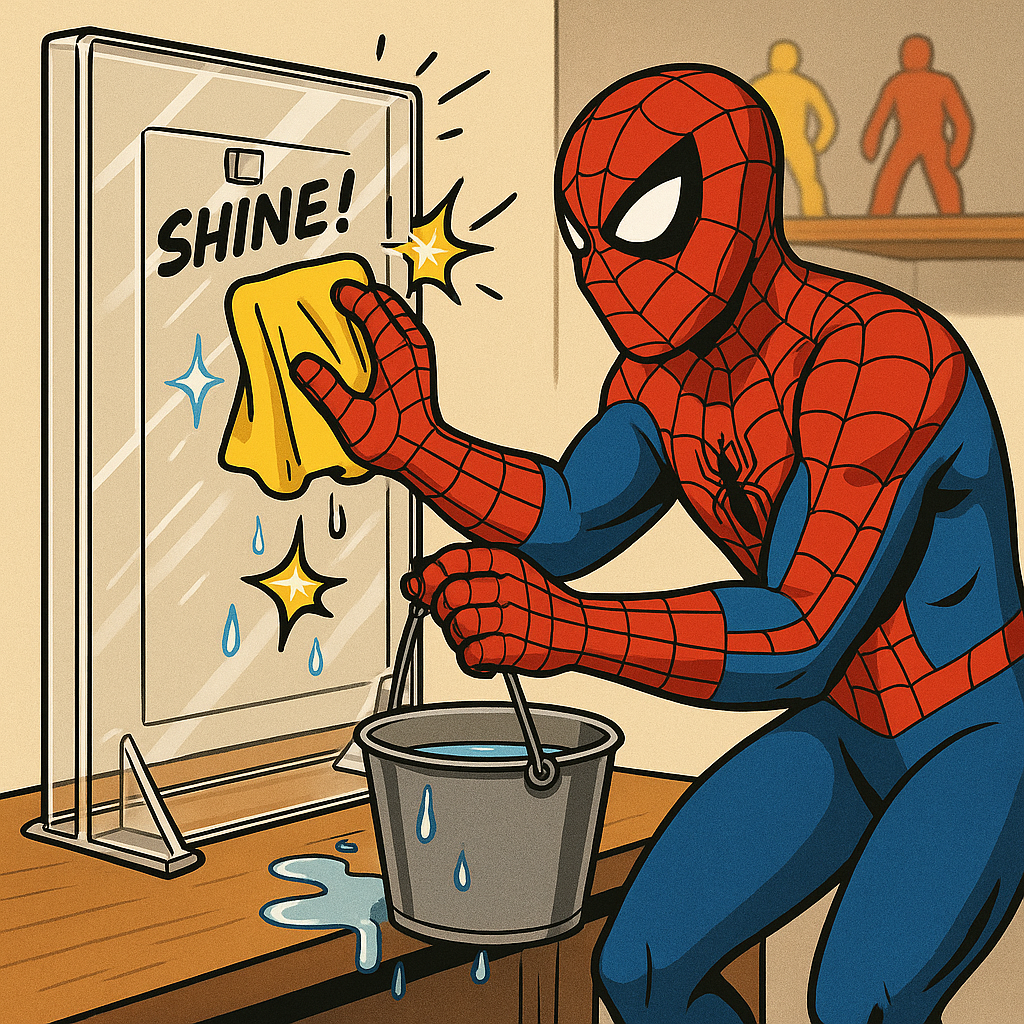Why UV Light Is the Arch‑Nemesis of Your Comic‑Book Collection—and How to Fight Back
Ask any seasoned collector and they’ll tell you: condition is king. Colors that pop, crisp white pages, and sharp corners turn a $2 newsstand copy into a four‑figure grail. But there’s an invisible villain quietly sapping that value every time you crack open the blinds, ultraviolet (UV) radiation. Below is a primer on why UV light is so dangerous to comics and the best strategies to keep your books looking, and appraising, like they were printed yesterday.
What exactly is UV light?
Ultraviolet radiation sits just beyond the violet end of the visible spectrum (approximately 100–400 nm). While we can’t see it, its photons carry more energy than visible light. That extra punch can break chemical bonds in pigments and weaken cellulose fibers in paper, in other words, the very ingredients that make comic books, well, comic books. Museums worry about the same phenomenon with historic documents and paintings, classifying UV as one of the ten primary “agents of deterioration.” Government of Canada
How UV attacks your comics
-
Color fading and bleaching
The vibrant cyan of Silver Age Fantastic Four covers or the neon oranges of a 1990s holo‑foil variant owe their saturation to dyes and modern synthetic pigments. UV photons literally snap the molecular bonds in these colorants. Once those bonds break, the pigment’s ability to absorb and reflect specific wavelengths changes, and the color fades irreversibly. Acme Plastics -
Paper yellowing and embrittlement
Comic‑book paper (especially the wood‑pulp stock used prior to the 1990s) contains lignin, a complex polymer that turns yellow when exposed to oxygen and UV. The same Canada.ca conservation guidelines note that UV accelerates both yellowing and the loss of tensile strength, making pages brittle and prone to tearing. Government of Canada -
Oxidation and “foxing” spots
UV light generates free radicals that react with iron or organic residues in the sheet, producing rusty brown “foxing” speckles. Once those spots form, they’re almost impossible to remove without professional conservation, and they lower both eye appeal and resale value. Acme Plastics
The financial hit
Market data are clear: books with color fade or cream‑to‑tan pages can grade a full tier lower at CGC or CBCS, slicing auction hammer prices by 20 – 60 percent. For key issues...say, Amazing Fantasy #15,that’s tens of thousands of dollars overnight. Protecting against UV isn’t just preservation; it’s an investment strategy.
Building your anti‑UV arsenal
| Tactic | How it Helps | Pro Tips |
|---|---|---|
| UV‑filtering acrylic or “museum” frames | Modern OP3 acrylic sheets block roughly 98 % of UV while remaining crystal‑clear for display. | Replace the glass in Ikea‐style frames or invest in purpose‑built 90%+ UV comic display like Slab Saver |
| Archival Mylar sleeves (a.k.a. “Mylar D”) | Polyester film can be manufactured to absorb or reflect up to 99 % of UV energy, creating a first line of defense without trapping moisture like polyethylene bags do. | Look for E. Gerber Mylites or BCW 2 mil “Archivals.” Collectors on r/CGCComics use them even over plastic “slabs” to add an extra UV barrier. |
| LED lighting | Quality LED fixtures emit almost no UV compared with fluorescents and halogens. | Check bulb specs for “UV‑safe” or keep illumination below 50 lux to mimic museum light levels. Government of Canada |
| Controlled environment & rotation | Less total exposure time means less cumulative damage. | Display high‑value books for a month, then file them back in a dark, climate‑controlled short box. Rotate a different title into the frame. |
| Location, location, location | Direct sunlight through windows is UV‑rich, even after ordinary window glass. | Hang frames on interior walls away from south‑facing windows, or apply UV‑blocking window film if the room must stay bright. |
Debunking a few myths
“A slab means I’m safe.”—Not entirely. CGC and CBCS cases cut down some UV but are not advertised as full UV filters. Smart collectors slip graded books into a Mylar sleeve or display them behind UV acrylic for confidence. CGC Comic Book Collectors Chat Boards
“Modern inks don’t fade.”—True, some soy‑based or pigment‑rich inks boast higher light‑fastness, but even 21st‑century books will lose vibrancy under prolonged UV. Better inks just buy you time. ResearchGate
“LED grow lights are harmless.”—Most white LEDs are safe, but horticultural or black‑light LEDs often emit UVA. Verify the spectral output before you repurpose that fixture for shelf lighting.
Final panel
UV protection isn’t glamorous; you won’t see it on a splash page. Yet it’s the behind‑the‑scenes hero that keeps Spider‑Man’s costume scarlet and the Bat‑signal a rich canary yellow for decades to come. By combining archival materials, thoughtful lighting, and smart display habits, you can effectively sideline the invisible menace of UV radiation—and let your comics live happily ever after in mint‑minus condition.



